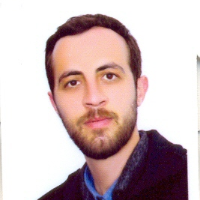Assessment of Direct Regeneration in Germany (Matricaria chamomilla L.) and Shirazi Chamomiles (Matricaria recutita L.)
Author(s):
Abstract:
Introduction
German (Matricaria chamomilla L.) and Shirazi (Matricaria recutita L.) chamomiles are the most important medicinal plants of the Astraceae family which are used in the pharmaceutical, health, food and cosmetics industries. Production of this plant has been undertaken in Iran mainly in Isfahan, Kohgiluyeh and Boyerahmad, Golestan and Hamedan provinces. In vitro propagation of plants have higher potential to produce qualified natural products, restoring and preserving of endangered plants, induction of somaclonal variation, industrial reproduction, valuable secondary metabolites and increased active ingredients. Researchers reported successful micropropagation system for five chamomile varieties on MS medium contained 0.01 mg/l NAA and 2.5 mg/l kinetin. The aim of this study was to investigate the effects of stem (with and without node), leaf and cotyledon explants and different plant growth regulators on direct regeneration of German and Shirazi chamomiles. Although the Shirazi chamomile is native to Iran, but German chamomile is Iran non-indigenous cultivar. By our knowledge, there have been no comparison reports about responses of these cultivars to tissue culture.Materials And Methods
This research was performed in the central laboratory of Agriculture Faculty in Yasouj University. Seeds were provided from Pakan-Bazr institute, Isfahan. Chamomile seeds were disinfected by ethanol (70%) for 5-10 min and sodium hypocholorite 3% for 5-12 min and then washed for several times by distilled water. Then, seeds were sown on MS medium for germination. After 2-3 weeks, seedlings were grown and then planted in MS medium supplemented with hormonal combinations of NAA at two levels (0.1 and 0.5 mg/l), kinetin at three levels (2, 2.5 and 3 mg/l) and Zeatin, BAP and 2ip at three levels (0.5, 1 and 1.5 mg/l). The experiment was performed in a completely randomized design with four replications. Factors included explants, cultivars and hormonal combinations. In this experiment, traits such as stem induction percentage, stem length, stem fresh and dry weight root induction percent, root length and stem fresh and dry weight were measured. Statistical analysis was performed using SAS software (version 9.1). In order to test the normality and perform mean comparisons, Minitab 14 and MSTAT-C software was used and excel software was used for drawing diagrams.Results And Discussion
For all traits except stem induction percent and root dry weight, triple interaction of explants, hormonal combinations and cultivar were significant at 1% level. Triple mean comparisons for cultivar, explant and hormonal combinations shows that the highest mean for stem height, stem fresh weight, stem dry weight, root induction percent, root height and root fresh weight was obtained in Shirazi Chamomile cultivar with cotyledon explants in hormonal combinations of 0.1 mg/l NAA and 1.5 mg/l 2ip. The results showed that the best explants in both chamomiles for direct regeneration were stem (whit node) and cotyledon with 78.75% and 75% regenerations, respectively. Also the best genotype and hormone combination were Shirazi chamomile and MS medium supplemented with 1.5mg/l 2ip with 0.1mg/l NAA. To determine the best hormonal combination for root regeneration from direct regeneration, the stems were embedded in medium contained different concentrations of IBA. The first signs of rooting production were observed after 5-7 days. After completing the roots formation (4 weeks after transferring), the rooting percentage, root length, fresh and dry weight of roots were measured. Based upon variance analysis, effect of triple interactions of IBA, explants and cultivar on all traits were not significant, but the effect of IBA for all traits was significant at 1% level. According to the results of mean comparisons for effects of IBA on root traits in direct regeneration of chamomile, the highest percentage of root regeneration (73.75 %), the highest root length (6.60 cm), root fresh weight (174.167 mg) and the highest root dry weight (16.425 mg) were obtained from medium contained 0.5 mg/l IBA. Root differentiation was influenced by auxin (0.5 mg/l IBA) or spontaneously. Regenerated plantlets were transferred to pots contained sterilized soil (3:1:1 mixture of soil: sand: leaf compost). For plant adaptation to natural conditions, glassy caps were used. After adaptation, the caps were removed and the plants were transferred into a growth chamber. Previous studies reported that MS medium supplemented with 0.2 to 1 mg/l of BA and 2 mg/l of NAA induced adventitious bud formation and shoot development in leaf explants of Roman Chamomile. A higher number of adventitious buds were observed at the proximal end of the explants. Plantlets were rooted on MS medium supplemented with 0.1 mg/l of IBA and successfully weaned in vivo.Conclusion
Based on the results of this research, chamomile showed relevant response to direct regeneration.Keywords:
Language:
Persian
Published:
Journal of horticulture science, Volume:29 Issue: 4, 2016
Pages:
601 to 609
magiran.com/p1515006
دانلود و مطالعه متن این مقاله با یکی از روشهای زیر امکان پذیر است:
اشتراک شخصی
با عضویت و پرداخت آنلاین حق اشتراک یکساله به مبلغ 1,390,000ريال میتوانید 70 عنوان مطلب دانلود کنید!
اشتراک سازمانی
به کتابخانه دانشگاه یا محل کار خود پیشنهاد کنید تا اشتراک سازمانی این پایگاه را برای دسترسی نامحدود همه کاربران به متن مطالب تهیه نمایند!
توجه!
- حق عضویت دریافتی صرف حمایت از نشریات عضو و نگهداری، تکمیل و توسعه مگیران میشود.
- پرداخت حق اشتراک و دانلود مقالات اجازه بازنشر آن در سایر رسانههای چاپی و دیجیتال را به کاربر نمیدهد.
In order to view content subscription is required
Personal subscription
Subscribe magiran.com for 70 € euros via PayPal and download 70 articles during a year.
Organization subscription
Please contact us to subscribe your university or library for unlimited access!



